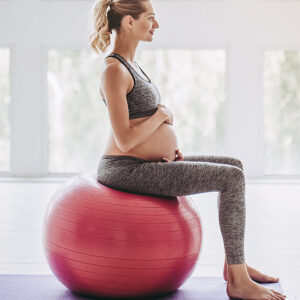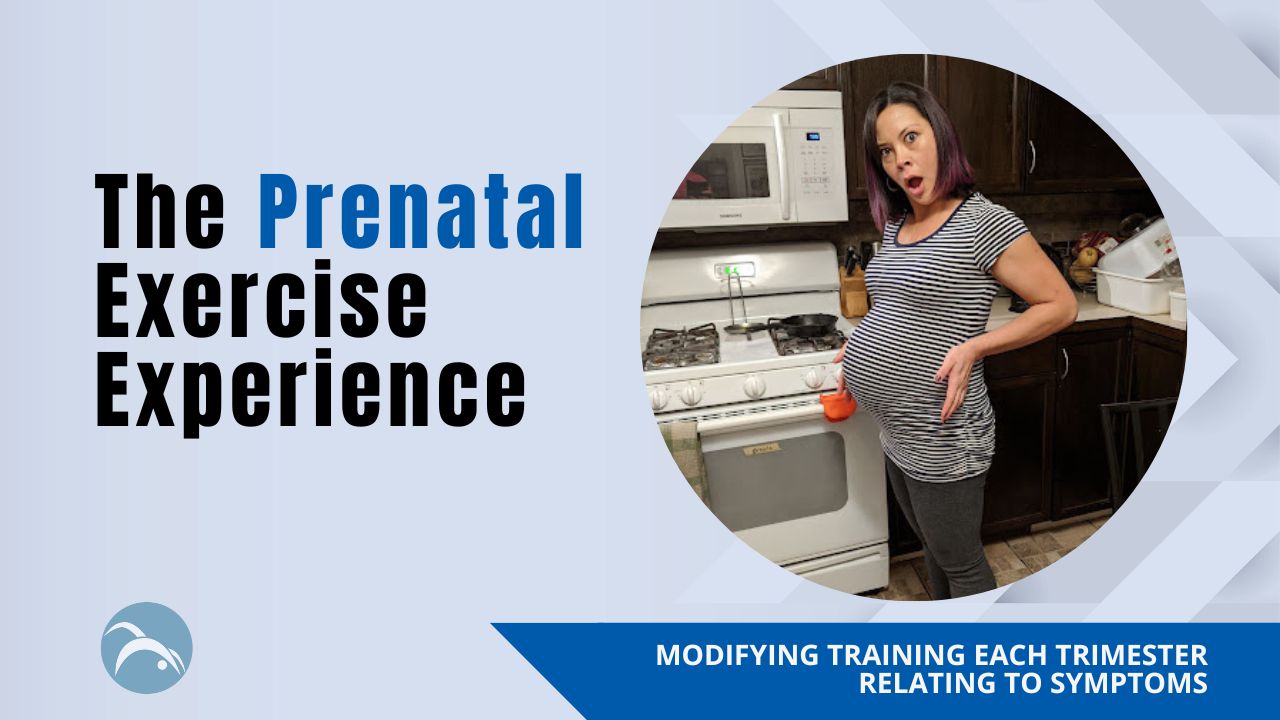
by Rachel Robertson
Modifying Pilates Training Each Trimester Relating to Symptoms
Chances are you will get the opportunity to work with a pregnant individual, and we want to acknowledge and respect the many changes that they are going to experience physically, emotionally and mentally. So how does one adapt an exercise program during each trimester based on how the client is feeling?
First, check in each session and ask them questions about how their body feels: How is their energy level? What did they eat that day? How did they sleep?
First Trimester Prenatal Exercise Experience
In the First Trimester, your client may struggle with:

- Changes in appetite
- Fatigue
- Nausea
- Sleep issues
- Lightheadedness
- Shortness of breath
- Frequent Urination
- Softer Ligaments
Overall, not many changes need to be made to the Pilates repertoire but you may need to consider how quickly are you transitioning between positions according to their overall strength, and the energy and stamina required to perform the exercises. Maybe today is just not the day for “Teasers”? Also, as Relaxin circulates, making connective tissues more pliable, emphasizing stability over mobility would be a logical adjustment.
Second Trimester Prenatal Exercise Experience

In the Second Trimester, your client may struggle with
- Round ligament pain
- Increase Breast Size
- Edema
- Leg Cramps
- Pelvic Girdle and Low Back Pain
At 4 months I begin to monitor how long the client is on their back during sessions and their subjective comfort. The main concern with supine positions is that the uterus will put pressure on the vena cava affecting blood flow. They are safe to lie down for 2 – 5 minutes, but everyone is different so monitor them regularly. At this point, I eliminate exercises like “Roll-up” and “Rolling like a ball” because they may increase pressure on the abdominal cavity and increase the likelihood of diastasis recti.
At this stage of fetal development lying prone may no longer be comfortable, thus it would be preferable to eliminate prone work and replace it with quadruped variations. Moreover, your client may need to change positions a lot more; try practicing some pelvic stability in supine, then rolling to one side for side kicks, returning to supine for glute bridges, then back to side kicks, followed by quadruped, etc. I also recommend utilizing a stability ball to incorporate connection breath and pelvic floor exercises with some upper-body strengthening.
Third Trimester Prenatal Exercise Experience
In the Third Trimester, your client may struggle with

- Braxton-Hicks Contractions
- Sharp groin pain
- Protectiveness of space
- Aversion to touch
- Extra Weight/ Rapid Growth
At this point of the pregnancy, your client has experienced 6-9 months of wanted and unwanted attention. It is possible that the last thing they want is to be pawed at, so you might need to transition to more verbal cueing versus tactile cueing. That being said, it is likely that your client may need physical assistance with some things, such as moving from supine to seated.

Want to learn more about exercising during pregnancy? Join me for a 1-hour webinar called the Prenatal Exercise Experience. May 13th at 12pm PST. To register email info@returntoform.ca
Price: $20
About the Author

For more than a decade, Rachel has used her extensive knowledge of human kinetics and functional anatomy to help others overcome their physical limitations. Fusing the science of kinesiology and the artistry of Pilates, she acts as the go-between for clients recovering from injuries – specializing in facilitating the transition between the physiotherapist and the return to regular work, play and physical activity. Rachel is also a Balanced Body Educator for CoreAlign.
As Rachel says, “anyone can do it” – and she’s here to make sure you can, too!


